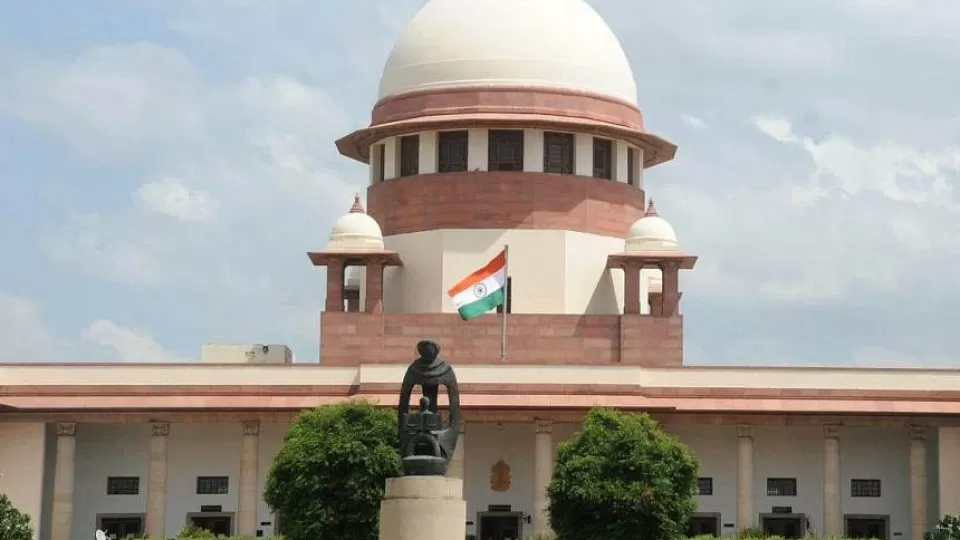March 17, 2023
SINGAPORE – The Supreme Court of India has been testing a system to transcribe hearings using artificial intelligence (AI) tools and natural language processing technology.
If the test – a first for the country – works, live transcription of oral arguments could become the norm in India, speeding up judicial work and increasing transparency in a country with more than 50 million pending cases across all courts.
It might also be the first time in the world that spoken language processing technology is used to transcribe court hearings.
While law firms employ professional transcribers for arbitration hearings in the United States, Britain and Singapore, few countries are known to transcribe regular court hearings. In their absence, court reporters and legal interns take handwritten notes.
The Supreme Court and high courts in India upload judgments online, but do not have enough staff or resources to transcribe or publish oral arguments.
But the Supreme Court in February started using a digital tool called Teres (Technology Enabled RESolution) to transcribe oral arguments by lawyers in a case involving a constitutional crisis in the western state of Maharashtra.
The move came after Mr Vikas Mahendra, a co-founder and now adviser to the Bengaluru-based Teres met tech-savvy Chief Justice of India D.Y. Chandrachud at a Delhi conference on arbitration and showed him the live transcription the company was doing there.
“I was brazen enough to catch the CJI between speeches to inform him about our tool,” Mr Mahendra told The Straits Times.
Within two days, the CJI’s office asked the company to deploy Teres on an experimental basis in the Supreme Court, which was struggling with a backlog of more than 69,500 cases as at Feb 1.
Mr Mahendra, who worked as an arbitration specialist in Singapore for London-based law firm Herbert Smith Freehills from 2010 to 2015, said that arbitration proceedings are routinely transcribed in Singapore, the US and Britain.
“Live transcription of arguments, witness examination, tribunal questions and everything else achieves significant efficiency, and the availability of such documentation makes lawyers more prepared as well,” said the 37-year-old lawyer.
But transcription is done by law firms employing highly skilled and expensive professionals who type 180 to 200 words per minute, an “extremely hard skill to replicate or scale up”, he said.
After moving back to India, Mr Mahendra asked his engineer brother Vinay Mahendra, 42, and brother-in-law Badarivishal Kinhal, 39, if they could build an AI-based live transcription tool.
They established Teres in 2018, and have since been providing the tool to law firms and arbitration practitioners in India.
Teres was first used in court on Feb 21, with a screen facing the lawyers displaying live transcription of the Supreme Court proceedings. All High Court and Supreme Court proceedings in India are conducted in English.
Chief Justice Chandrachud had requested the lawyers not to interrupt or speak over each other so that the tool could catch their words.
“We will just see how it works, at least in Constitution bench matters. We will have a permanent record of arguments. Of course, it helps the judges and the lawyers, but also helps our law colleges. They can analyse how matters are argued. It is a huge resource,” the judge reportedly said in court.
Local newspapers reported that senior advocate Kapil Sibal joked that as every word said in courtrooms would be recorded, “posterity will all get to know what foolish arguments we made”, which made the courtroom burst into laughter.
In a historic step, India’s first AI-based transcript was published on the Supreme Court website by the end of that day.
Live digital transcription can be done at “one-fifth the cost and time” of human transcription, said Mr Mahendra, but he added that “a manual layer of correction is crucial”.
So, while AI transcribes the proceedings, a team of transcribers watching a live video stream of the hearing manually vets the draft before it is published in five to six hours.
Legal experts believe that AI-based transcription of hearings will also improve accountability and transparency at a time when there have been accusations that some judges have made comments partial to the government, which are reported only if journalists happen to be present.
It is also part of a series of technical innovations that is democratising the Indian judiciary and making it more accessible.
In 2018, the Supreme Court allowed the live-streaming of cases of national importance, in response to a plea filed by senior advocate Indira Jaising. The court called it “a good beginning” but the decision was implemented only in September 2022.
The Teres team has been using previous pleadings to teach the tool to recognise more proper nouns, legal terms and names of places. The next step, Mr Mahendra said, is to teach the tool to recognise languages other than English so that lower courts across India can use it.


